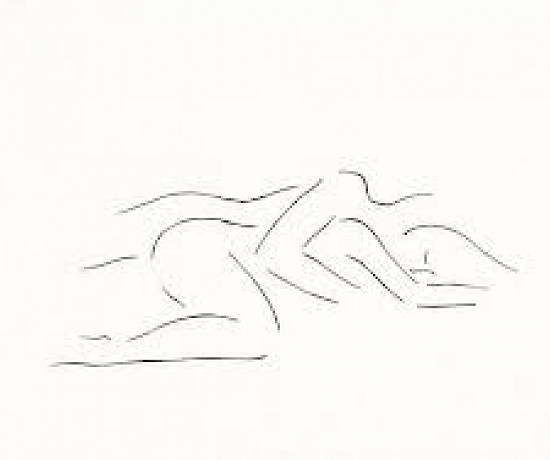What we are going through collectively is unprecedented in modern times, yet it highlights the universal condition that mankind has grappled with through the ages. How do we make sense of cataclysmic change, when everything we hold dear and near can be taken from us almost in the blink of an eye. Natural disasters, war, disease, famine, sickness, and death have always existed. It is all the more destabilising for us in modern times when we have grown used to so much security in our lives; vaccines, health, and safety, insurance, financial stability so we feel as though we have control but Covid19 global pandemic has shown that despite all these measures things can still turn our world upside down.
Ancient teachings developed to help mankind navigate through any of life’s storms. The Yoga Sutras, written some 1600 years ago, is a text of instruction on life using the tools of yoga for mind, body, and spirit.
This text describes the causes of our mental suffering through the idea of ‘kleshas’ the literal translation for which is ‘poisons’ in our mind (found also in Buddhism).
Being aware and overcoming these afflictions is thought to lead to the end of suffering, and the ultimate liberation so we can sail through any storm.
1) Ignorance (Avidya)
Within the Yoga Sutras, 'avidya' is often translated as ‘misconception, lack of spiritual knowledge, or spiritual ignorance’, and it is this first klesha that is the root cause of the others – many texts even describe ‘avidya’ as the trunk of the tree of suffering, with all other kleshas branching from it.
Avidya is possibly one of the most challenging obstacles to overcome with regards to finding contentment, as it shows us the world through a false lens, or as the Sutras describes as a veil. With the veil of avidya covering our metaphorical eyes, we don’t see reality, rather we see what we think is reality. Our perception is veiled or clouded by worry of the future which may not happen, or memories of the past, we fail to see with clarity the innocence of this moment. Afflicted by avidya, we believe that our thoughts are true, that our perceptions are reality, and that what we individually believe is ‘right’ is the truth. This clouded view is the most difficult to overcome not because there’s so much to learn, but because there’s so much to un-learn and let go of. Avidya gives birth to all the other kleshas, which cause fear, pain and sorrow, simply because we tend to believe our own perceptions and thought patterns, rather than life as it is in each moment, without expectation.
2) Identification with the ego (Asmita)
Our sense of ‘I – Me – My’ can become the most important thing in life. We can see this currently in the millennial generation; the age group with possibly the strongest sense of ‘I’, but also a huge amount of emotional and psychological suffering. When we speak about the ego, the origin of this word was never meant to denote something intrinsically ‘evil’, but the simple (or not-so-simple) part of us that is our personality, and in Freud’s theory it is found between the chaotic and primitive ‘id’ and the moral conscience of the super-ego.
The suffering arises when we become ego-centric, and instead of having an expansive awareness of ourselves as part of something greater than us, we become contracted, individualised and separate. The more ‘I’ am the most important thing in the world, and the more focus put upon ‘me’, the more pressure ‘I’ feel, because it seems as though the whole world revolves around ‘me’. Any disruption or upset that occurs is felt to be much bigger than it really is.
3)Attachment (raga) and Aversion (Dvesa)
Attachment and aversion, desiring or dispelling pushes and pulls us in all directions, meaning we’re forever at the mercy of what we need, want or like, and what we fear or hate. In BKS Iyengar’s Light on the Yoga Sutras, he says that Raga and Dvesa afflict us on an emotional level, and are imprints of pleasures and pains. Physically, he says they’re located within the hypothalamus or subconscious part of the brain. It is believed that the subconscious mind affects almost 95% of our behaviours, and seems to be so deeply ingrained that we may not even realise we have certain attachments or aversions.
Feeling attached to a pleasurable experience can happen instantaneously – a new lover, the taste of chocolate, the smell of coffee, social media or the sensation of a drug. All of these things create a release of chemicals that stimulate the brain to want more, and if we continue to give it more regularly enough, we can become attached to it. Whilst these pleasurable experiences may feel good initially, they can create suffering if we allow them to because once that pleasurable experience is over, we often miss it and wish for that pleasure to return. If we’re not satisfied, we’re craving, and if we obtain that which we crave, we cement that attachment within us. How to overcome attachment, then? It’s not about avoiding any sort of pleasure, but realising the impermanent nature of pleasure, and remaining detached, whilst receiving the pleasure being ok with its impermanence and monitoring our consumption of it to remain aloof from it.
More obviously having an aversion or repulsion towards something can cause suffering (it’s contracting, causes stress and anxiety, and is very consuming on a psychological level, leaving little room for spiritual progression, let alone enlightenment. Of course, we learn discernment through our experiences and for survival. But they can cause us to create suffering in our minds, the most extreme example being phobias. The practices of yoga, help us clear our minds so we can rise above these unconscious pulls of attachment and aversion and not be a ‘slave to them’. We can savour and enjoy all experiences without wanting to hold on to them or push them away but just acknowledging them as they are in that brief moment, and then let them go. In this, we can attain freedom and inner peace.
5) fear of death - (Abhinivesa)
In parts of the East like India and Nepal, death isn’t so much of a taboo subject, whilst here in the West, it’s usually something we try to avoid even speaking about. Most eastern traditions and religions expound the belief that you are not your body, but something far greater and more profound, our true nature and therefore there is nothing to fear.
Within the Bhagavad Gita, Krishna speaks of the True Self with the words; “Swords cannot pierce it, fire cannot burn it, water cannot wet it, and wind cannot dry it,” and even though it’s a hard task to ask anyone to truly let go of the fear of death, releasing the grip of fearfully clinging to life can give us great freedom and release from the suffering. Rather than a clinging, this lighter holding of life makes us more open to new experiences, more gratitude, more appreciative of our loved ones, more adventurous and the ability to be truly present and immersed in the moment of now.
These are ancient teachings and some may seem difficult to concur with, in modern times with the advent of psychology and science. They may seem oversimplified. But for me, they have brought greater clarity, freedom, and peace. The practices of yoga - meditation, movement, breathwork all help reduce the mental chatter, reduce stress held in the body, change the neurochemical balance of our brain and bring us to a point of equilibrium so we can overcome these mental toxins or kleshas, and be in a state of oneness, wholeness within, and ultimately bliss (by which I don’t mean ecstasy or fireworks but a calmness attained from this freedom). Ultimately it can be summarised as letting go, being in the moment, and trusting that all is as it should be. If nothing else this current situation is forcing us more than ever before to develop this awareness.
by Sama,Yoga teacher, yoga therapist and bhuti founder




